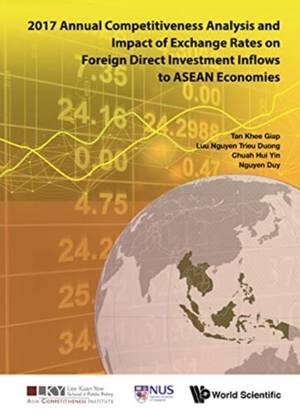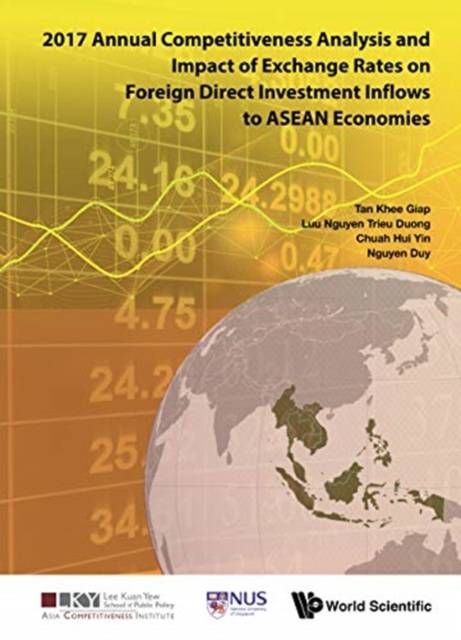
- Retrait gratuit dans votre magasin Club
- 7.000.000 titres dans notre catalogue
- Payer en toute sécurité
- Toujours un magasin près de chez vous
- Retrait gratuit dans votre magasin Club
- 7.000.000 titres dans notre catalogue
- Payer en toute sécurité
- Toujours un magasin près de chez vous
2017 Annual Competitiveness Analysis and Impact of Exchange Rates on Foreign Direct Investment Inflows to ASEAN Economies
Khee Giap Tan, Trieu Duong Luu Nguyen, Hui Yin Chuah, Duy Nguyen
232,95 €
+ 465 points
Description
This book titled 2017 Annual Competitiveness Analysis and Impact of Exchange Rates on Foreign Direct Investment Inflows to ASEAN Economies recount the development experience of ASEAN over the past 50 years, describe the long-term mega-trends which will shape ASEAN's development trajectory, and propose a development vision with actionable policy recommendations for ASEAN to become the fourth-largest economy in the world by 2030.Into its fifth edition, the book updates the annual economic competitive analysis for ASEAN-10 conducted by the Asia Competitiveness Institute (ACI). It also introduces an innovation to the institute's methodological framework which is the use of Shapley values to come up with objective weights for indicators, sub-environments and environments in the competitiveness index. This methodological innovation not only adds an element of objectivity in terms of the assignment of weights, but also validates the robustness of results obtained from the competitiveness studies over the past years.Recognising the importance of foreign direct investment (FDI) to growth and development in the region, the book also presents an empirical investigation of the drivers of FDI inflows, with specific focus on the effects of exchange rate and its volatility. For a group of economies looking to leverage on FDI and trade to transform themselves into the fourth-largest economy in the world, it is important for ASEAN to achieve high external competitiveness, especially in terms of the member states' real effective exchange rates (REER). These research findings make important academic and policy contributions by teasing out the relationship between REER levels, volatility and FDI in the ASEAN context.Finally, the book collates speeches by academics and policy-makers on issues of key interests to the future development of ASEAN. It contains the reflection on the ASEAN Charter by Professor Tommy Koh, Ambassador-at-Large at the Ministry of Foreign Affairs of Singapore. Moreover, the discussions on the One Belt One Road initiative and its implication for the region by Mr K Shanmugam, Minister for Home Affairs and Minister for Law of Singapore; and Professor Liew Mun Leong, Chairman of Surbana Jurong and Changi Airport Group as well as Provost Chair and Professor of NUS make this book a valuable compendium for policy-makers, thinkers, and anyone who has an interest in Southeast Asia and the Asia-Pacific.
Spécifications
Parties prenantes
- Auteur(s) :
- Editeur:
Contenu
- Nombre de pages :
- 276
- Langue:
- Anglais
- Collection :
Caractéristiques
- EAN:
- 9789813273054
- Date de parution :
- 27-01-19
- Format:
- Livre relié
- Format numérique:
- Genaaid
- Dimensions :
- 190 mm x 259 mm
- Poids :
- 748 g







